Speculation is mounting that Canada is seriously considering the Type 26 Frigate for its ‘Canadian Surface Combatant’ project.
Anne Healey, BAE General Manager (Group Business Development Canada) said, referring to a BAE bid to sell the Type 26 in Canada:
“The Type 26 Global Combat Ship is the world’s newest and most advanced surface combatant design. We are planning to cut steel in 2017, which is ideal timing for the CSC programme; being 3 years ahead of the Canadian program.”
According to local media, industry sources say the Request for Purchase has been delayed because of questions raised about the amount of Canadian content and the decision to consider the Type 26.
Canadian firms have already won contracts to support UK Type 26 programme with Ottawa-based engineering firm WR Davis being the first to secure a manufacturing contract to provide key equipment.
BAE Systems has awarded the contract for the Uptake and Downtake elements of the ship’s funnel and exhaust system for the first three Type 26 ships.
Tom Davis, Vice President of WR Davis Engineering Ltd, said:
“We are delighted to participate in the prestigious UK Royal Navy Type 26 Global Combat Ship programme for the supply of the complete Downtake, Uptake, and Infra-Red Suppression systems for the propulsion and ship service engines.
This builds on our previous experience of supplying similar systems for the UK Royal Navy’s Type 45 destroyers and reinforces our position as a world leader in the design and supply of engine Downtakes and Uptakes, for naval warships.”
During a House of Commons debate in 2011, it was revealed that Australia, Malaysia, New Zealand, and Turkey had all expressed interest in collaborating on the Global Combat Ship, and that the UK was in “close discussion” with Canada. Although Canada had once ruled out partnership with the British programme, in May 2016 IHS Janes reported that the Type 26 Frigate was still one of the contenders for the Canadian Surface Combatant requirement.
In October 2016 it was reported that twelve bidders had been asked to submit their designs by April 2017. Construction is slated to begin in the early 2020s and take 20-25 years to complete




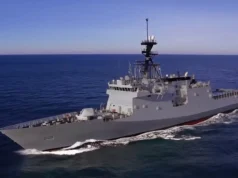
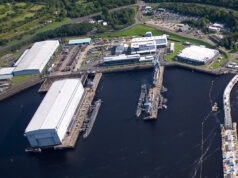
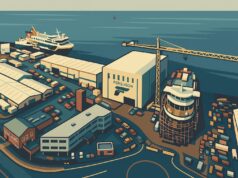

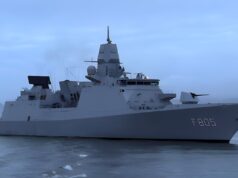
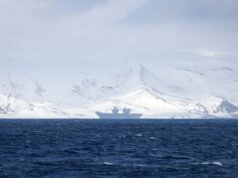
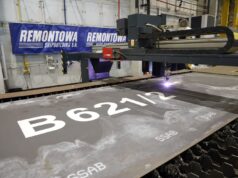
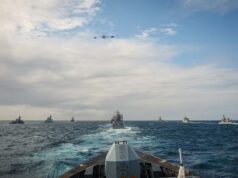

Would be nice, hopefully it’s not just a case of the Canadians getting as much work share as possible before picking something cheaper or starting the cycle again with the 31s before picking something more French.
… at the rate we’re going they will probably end up getting more ships than us!
Good why not?
Doubt that. Canada is doing the same as the UK. Fewer ships replacing the current fleet. The rcn is looking at 15 ships. That will replace the 12 frigates and 4 destroyers. If we get 15 we will be lucky.
Not sure they would, after the shambles that was their sub procurement from us!
Actually, the Canadians are the architects of their own misery where it comes to the Upholders. A lot of the problems with the Upholders/Victorias came from Canada dithering on the purchase while they wasted away in mothball. They didn’t seem to realize that vessels that had been tied up uncrewed for a significant period of time might require some maintenance work prior to becoming serviceable. Then after actually getting them decided to rip out several major systems out to replace them with American versions, only to find that this didn’t quite work.
The Upholders when built where some of the most automated warships ever, and surprisingly when you take out huge chunks of those tightly integrated systems, and then on the cheap try to jam in new equipment that was never designed to work with the preexisting set up, things went wrong. Very wrong.
As built the Upholders were world class, state of the art, diesel electric submarines, which the Canadians have now thoroughly ruined though incompetence and mismanagement.
The Victorias are doing quite well, and are certainly showing the strength of the design. But you’re right, procurement in the country is far too political and the end user, the military, ultimately pays the price.,
I consider the T26 programme for Canada and for that matter Australia to be a bit of a long shot, given UK’s poor shipbuilding track record over the past 40 years but we can but hope that it will selected and this proves a turning in the industry fortunes. The last successful UK surface warship was the Leander class which was a long long time ago.
So could the US Navy…
Not the first time our Commonwealth partners have bought British war ships. Leander Class was especially popular and also as secondhand vessels too! Such an outcome happening again is very good news for the UK Exchequer, but not so welcome to the Royal Navy. If orders are placed any hope of the RN getting more 26’s (if that was required) would be much reduced. Capacity is the topic of the moment, as naval experts raise the flag of concern over the size of the fleet. How will any additional new builds be achieved (and the impact on Class 31), is beyond me.
Whatever Canada buys will be built in Canada. I wouldn’t worry too much about the supply chain. All Canada is looking for is a design.
There is no chance that any Canadian Type 26’s would be built in British shipyards. It is the design and tech support that would be purchased. The Type 26 has an advantage in that Halifax Shipyards has already been chosen to be the ship builder. Perhaps coincidentally, (or not), they are also BAE’s partner in bidding for the design of the new ship. It has been proposed that Canada acquire 15 new ships to replace the 12 Halifax-class frigates, and the then 3 Canadian 1970’s destroyers, now down to 1.
4 Iroquois destroyers
A wise choice if Canada chooses the Type 26. They will be excellent, multi-mission warships. Likely the best frigate in the world.
Lovely idea if they decide to even buy just the design.
It’s a nice looking ship, but the 5 inch gun turret looks too square.
I think it would look better with the “Kryton” turret.
There are so many new designs for warships and pros and cons with all of them. The Italians, Dutch, Germans & French each have multi-Purpose frigates that can ” do the job”. But there is only one design for Canada that offers a balanced “plug & play” approach, and that seems to be the BAE Type 26. It is a modern 7000 ton ship with just about all the capabilities Canada would want in a warship for the future. You can configure it for both ASW and/or ASuW very easily and “Canadianize” it as our defense needs dictate. The major task would be to figure out what type of Combat System would integrate best with this ship for Canada’s Navy. It may only have one draw-back. Ice capability in our North. If it had a strengthened hull though, that would certainly help.
After.the submarine fiasco they should give them to us
FUTURE CANADIAN SURFACE COMBATANT-THE ONLY OPTION
Now that the Canadian government has entered the decision phase for the bids entered for the rights to build 15 Canadian Surface Combatant (CSC) ships, it is time to give an opinion as to which of the three bids entered will be the best fit for Canada’s Future Naval Fleet. The backbone of this future Canadian Naval Combat Fleet will be vessels that will see Canada through the next few decades, and must be judiciously chosen. There are several new designs of warships being presented to Canada and pros and cons with all of them. Spanish, Dutch and British companies have all answered the Requests For Proposals (RFP’s) within the time-frame. Spain is offering their F-100 Christopher Columbus Class, the Dutch with their De Zeven Provincien Class and the Lockheed-Martin (LM)/British Aerospace Electric (BAE) consortium offering their Type 26 Frigate. The Italian/French consortium RFP was disqualified as they had not submitted official proposals within the time limit. Canada expects to make a decision on the winning bid by the Spring of 2018.
All companies (including Germany) have Multi-Purpose Frigates either in service, under construction or planned that can “do the job”. The German Type 126/MKS 180 Saxony Class is particularly interesting, with it’s strengthened hull for Arctic Operations, but there is only one design for Canada that offers a balanced “plug & play” approach, and that design is, without question, the LM/BAE consortium Type 26 Frigate. This ship exceeds Canada’s high-level requirements, will be deployable worldwide for extended periods and would be more than capable of replacing our Anti-Air, Anti-Surface and Anti-Submarine capabilities with one single Class of ship. The Australian Navy has the BAE Type 26 frigate on their short list to replace their aging frigates as well. No other ship design compares to meet Canadian Naval requirements, including the Italian/French FREMM Class, the German Type 126/MKS 180 Frigate, the Spanish F-100 Christopher Columbus Class or the Dutch De Zeven Provincien Class.
The LM/BAE Type 26 Frigate is a cutting-edge warship that is simply the best fit for Canada’s future work-horse Navy. It is a modern new warship with all the capabilities Canada require’s in a CSC. The Type 26 is infinitely adaptable, can easily be re-configured and the RCN can “tweak” the design to cater its own development requirements, which is where, the Type 26 has the potential to excel. A re-configurable mission bay can accept containerized loads to allow the rapid re-loading of the vessel. Such loads might include aid/rescue packages, underwater vehicles, boats or Naval Drones.
The Type 26 Frigate is 149.9 meters (492 ft) in length and has a maximum beam of 20.8 meters (69 ft) with a displacement of 7,000+ tons. A CODELOG (Combined Diesel Electric or Gas Turbine-MT 30) configuration is deployed in the ship, giving it a top speed in excess of 29+ knots with 4 x 20V 4000 M53 Diesel Generators. It has a MK 41 VLS system that can accommodate Surface, Air and Land Attack Missiles. It has a 5” 62 caliber Mk. 45 Medium Range Gun along with 2 X 30mm, 2 X CIWS & 2 X Mini-Gun Systems and can be fitted with future Canadian torpedo’s and counter-measure’s. It will accommodate Canadian Hull Mounted & Towed Array Sonar systems that are vital to long-range submarine detection. Its large Flight Deck can easily handle the CH 148 Cyclone helicopter in it’s hanger, with the ability to land Heavy Lift Chinook Helicopters. It’s hanger facilities are also large enough to accommodate Maritime UAV’s along with a flexible Mission Bay.
It can undertake a wide range of roles from high intensity conflicts including Anti-Submarine/Anti-Surface Warfare and Area Air Defence, along with the ability to aid in Humanitarian Assistance and Disaster Relief (HA/DR) operations. The Type 26 is flexible, versatile and highly survivable with an extremely low acoustic signature. It exceeds all Canadian Naval requirements, and will accommodate Canada-specific modular design sub-systems with open systems architecture. These same features will minimize ownership costs and facilitate Canadian industry playing a major role in through-life support and upgrades, delivering long term economic benefits to Canada. Its low acoustic signature, crucial to evading detection from submarines, will translate into safety and survivability of the crew, and the ability of the ship to successfully complete its missions. Accommodations are included for 208 crew, with a core complement of 118 sailors.
A major part of the ship design will be the new Lockheed-Martin state-of-the-art LM CCM 330 Combat System (CS), that will meet all of Canada’s Naval C4ISR requirements. It may only have one draw-back. Ice capability in our North. If it had a more strengthened hull however, that would certainly go a long way to meet the strategic needs for a truely “Blue” Three Ocean Canadian Navy. It also works well within our own time-frame as BAE has already started construction of their Type 26 Frigate in July of 2017, about three years ahead of Canada’s future Naval Frigate requirements.
The LM/BAE Type 26 Canadian Surface Combatant is simply the right solution for Canada’s Future Naval Fleet and at a final cost of between 60/70B CAD, they are still well worth the investment and of course will be built here in Canada.